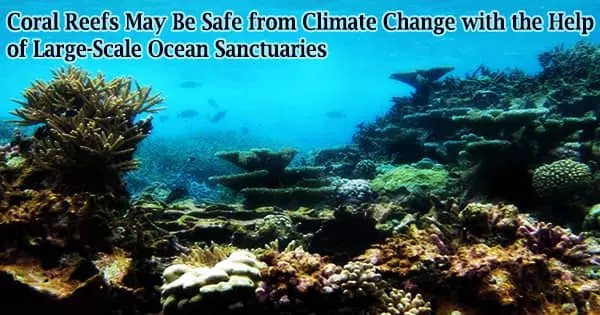The oceans on Earth are home to some of the most diverse ecosystems on the world, yet rising temperatures are driving the extinction of coral and other marine life. More international cooperation is required, according to a recent study on managing the impact of climate change on these organisms, to secure the survival of the more than 6,000 coral species.
“Coral reefs are an essential ecosystem on our planet,” said Andrea Grottoli, co-author of the study and a professor in earth sciences at the Ohio State University. “Coral reefs are really important for humans in that they provide protection to coastlines from erosion and storms, and they’re essential for certain services like tourism and other parts of the economy.”
The study, which was published in the journal Global Change Biology, promotes the usage of mesoscale sanctuaries, or regions, to safeguard these ocean environments. These regions can span thousands of miles and frequently cross international boundaries.
“Global warming is the No. 1 threat to coral reefs right now,” Grottoli said. “So when we think about coral reef conservation, we can’t limit ourselves to arbitrary geographic boundaries.”
Reefs would greatly benefit from a “continuum of conservation,” according to Grottoli. But because different countries and politicians have different conservation agendas, it might be challenging to safeguard the environment.
Despite taking up less than 0.1 percent of the ocean’s surface, coral reefs are somehow connected to around 30% of all marine organisms, according to Grottoli. But as sea temperatures have risen, coral reefs all across the world have been under more stress, leading to greater incidences of coral bleaching, or the apparent paling of the coral surface.
The animal’s previously hidden skeleton becomes revealed due to coral bleaching, turning it into a fading ghostly white. Although bleached coral does not die right away, it can cause global extinction. Mass bleaching incidents, according to researchers, are a sign of an ecosystem’s deteriorating health.
The Great Barrier Reef, a sophisticated coral system so vast that the living structure can be seen from space, may be the place where most people first learned about coral. Every year, more than 2 million tourists travel to the area, which is located just off the coast of Australia.
An estimated $36 billion in annual economic value is generated by the attraction. The GBR was recently devastated by another huge bleaching incident, the fourth in just six years, despite being the most protected marine area in the world.
Warming seas are also altering the composition and architectural complexity of coral reefs, which has unquestionably contributed to the increase in the frequency and intensity of catastrophic catastrophes.
Coral reefs are an essential ecosystem on our planet. Coral reefs are really important for humans in that they provide protection to coastlines from erosion and storms, and they’re essential for certain services like tourism and other parts of the economy.
Andrea Grottoli
“Under this reality, the future of coral reefs may appear grim,” the paper said.
There is some good news, though. The genetic diversity of coral species ensures that certain corals may be able to adapt and recover even as the world’s coral population is declining.
The paper also contends that while there is a critical need to cut greenhouse gas emissions on a global scale, in the interim we must adopt wide, transdisciplinary methods to the establishment of both small-scale and extensive ocean sanctuaries. Grottoli thinks education will play a significant role in the hard work of protecting coral.
“People who understand coral reefs, and who understand the value of coral reefs, are much more likely to do something to help protect them,” she said. “If you don’t know anything about coral, and you’ve never seen one, how can you have any empathy or feel any connection to that ecosystem?”
Even a list of steps people can take at home to support scientists’ conservation efforts was developed by Grottoli and her colleagues while she served as president of the International Coral Reef Society. The National Science Foundation provided funding for this investigation.





